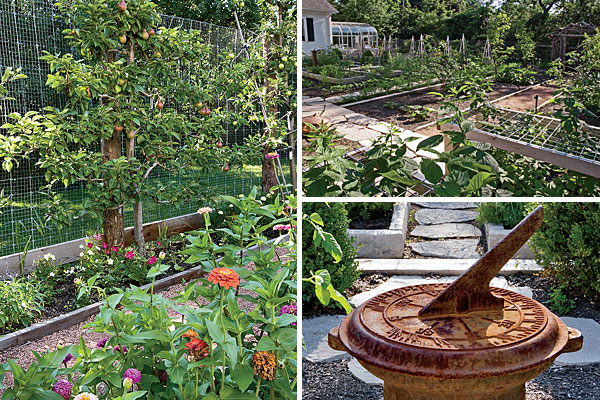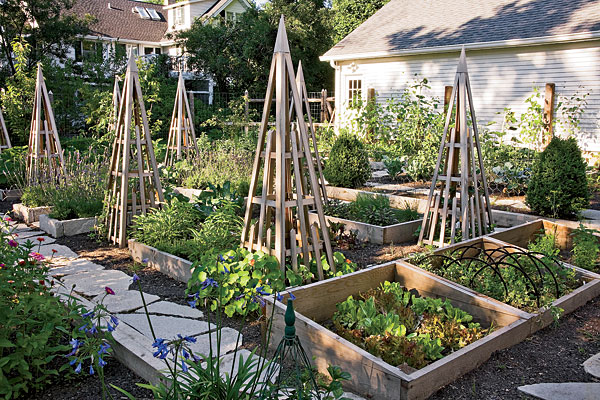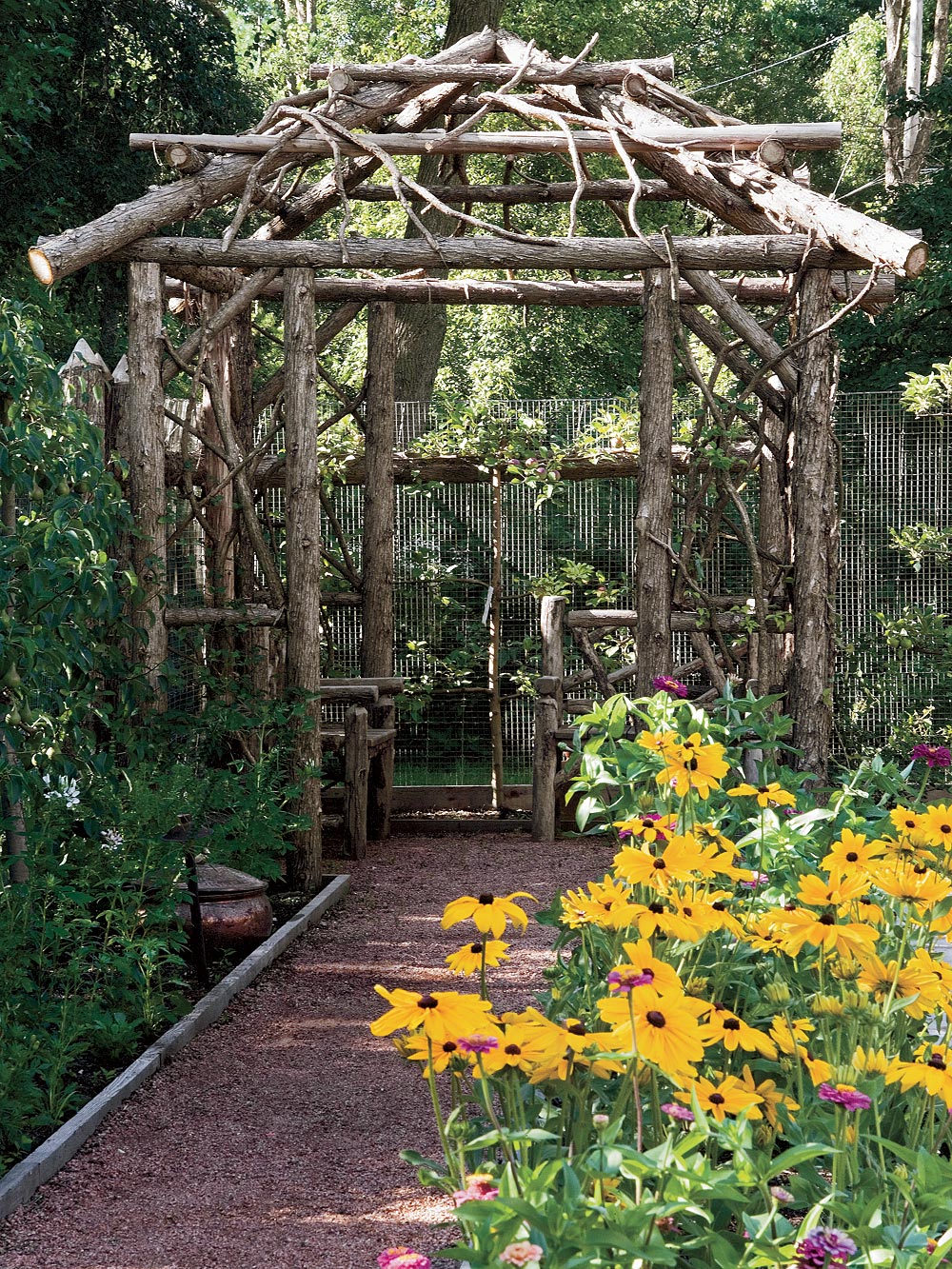Maureen Carson, who lives with her husband in the tiny northwest suburb of Golf, had the perfect present in mind for her 50th birthday—and it wasn’t a vacation or an expensive piece of jewelry. Carson, a doctor whose free-time passions revolve around cooking and growing food, wanted a potager: a beautiful, functional kitchen garden in the French country style, with vegetables mingling with fruit, flowers, and herbs.
To pull it off, she and her husband turned to Craig Bergmann, owner of Lake Forest–based Craig Bergmann Landscape Design. “Vegetable gardening yields immediate rewards,” Bergmann says. “You plant a peony and you may not see results for four or five years. You plant a cabbage and you can eat it in two months’ time.”
His plan for the Carsons’ garden involved three steps useful to any aspiring vegetable gardener.

1 Create an organized space for planting.
“If we just had a 40-by-40-foot patch of dirt, it would be overwhelming,” Maureen Carson says. Bergmann’s structure keeps the space manageable. The garden consists of two rectangular areas—one with a birdbath in the center, the other with a sundial—which are at slightly different levels and connected by steps.
Symmetry reigns: Each rectangle contains raised beds, vegetable plots, cold frames, and bean tepees arranged in squares.
Boundaries defined by hardscape separate plants that are best kept apart. Tepees keep beans and cucumbers, which like to spread out, from becoming messy. The grid provides flexibility to vary the design each growing season.
Organization also makes caring for the plants easier, as none of them are more than three feet from a gravel path or steppingstone. No more muddy shoes.

2 Keep bunnies away without compromising aesthetics.
The garden is bordered on one side by a garage and on another by the Carsons’ house; the rest is edged with fencing.
Fences are a fact of life for gardeners, but they don’t have to be ugly or cumbersome. Bergmann chose galvanized woven wire, a barrier designed with small animals in mind, for the space. The fence, which is eight feet high and extends 18 inches below ground, keeps out all manner of hungry wildlife, from rodents to deer.

3 Plant a diverse crop—and don’t forget flowers.
Vegetable gardeners can create an appealing space by partnering plants of varied textures, colors, and heights, Bergmann says.
The Carsons’ garden comes alive with bursts of orange and pink, complemented by cool blues—some of Maureen’s favorite colors. Bell peppers and rainbow Swiss chard are not far from okra and nasturtiums, flowers that taste great in salads. Lavender thrives in raised beds and stone pots. And electric-orange tithonia (Mexican sunflower) add yet more color.
Carson varies the locations of her plantings from year to year for soil health. And her bounty is impressive—last fall, the Carsons hosted a dinner for the Night Ministry, a local nonprofit, using some 36 ingredients from their garden. Talk about a gift that keeps on giving.



